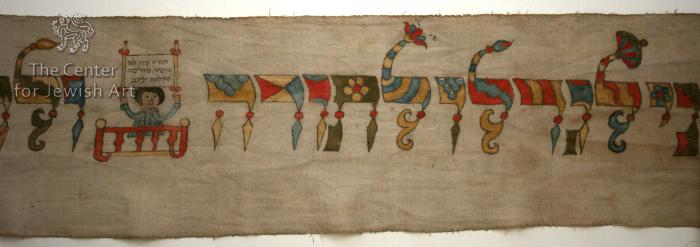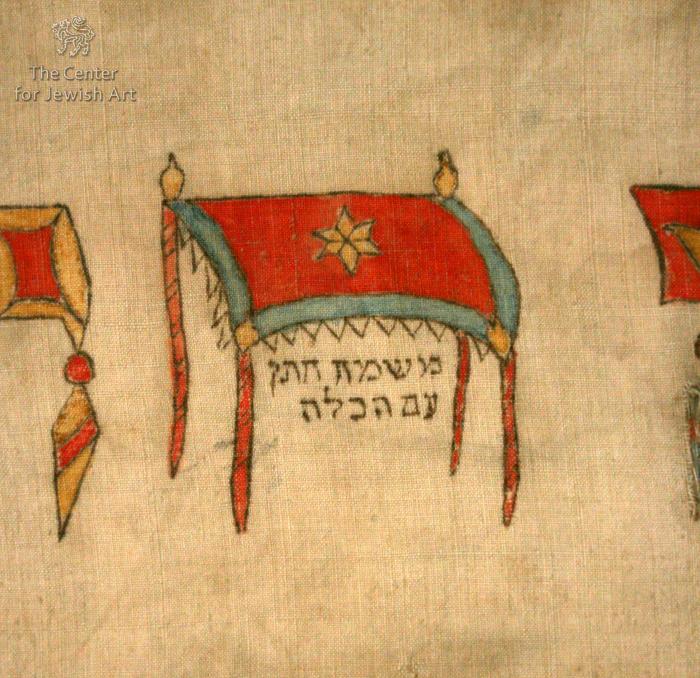Obj. ID: 39301 Wimple (Torah binder), France, 1796

sub-set tree:
The following description was prepared by William Gross:
The custom of the Wimpel or Torah Binder stretches back some 500 years at least in the world of classic Ashkenaz, the German speaking lands. The cloth which held the child at the time of his circumcision, almost always of linen, was cut into strips and sewn into a long textile. On this lengthy cloth was embroidered or painted a formulaic inscription, blessing the child and wishing that he grow up to "the Torah, the Chupah and good deeds". The beginnings of the custom were executed on linen cloth with silk embroidery. In the late 18th century the custom passed to painting on the textile with substantial illustration, although late examples of embroidered Wimpels do exist. Wimpels in the Gross Family Collection have their origin from Germany, Denmark, the Czech lands, Luxembourg and Alsace. The Wimpel served as a Torah Binder, being brought to the synagogue for use on the child's first birthday, his Bar Mitzvah and the Shabbat Chatan before his marriage.
Towrad the end of the 18th century an ever increased number of Wimpels were being decorated by painting rather than embroidery. This example, with its most charming illustrations, is from Alsace, and is one of the very earliest Torah binders extant from that area. The illustration of the Bar Mitzvah child lifting the Sefer Torah in Hagba'a is very seldom seen on Wimpels. Also very interesting is the very human representation of the Zodiac "Twins" and the elegant representation of the sign of the Levi'im.
Name: Ya'akov ben Mendel Segal











